Since you’re probably coming from Part 1, you may already know that I’ve been living and breathing user interface and product design for just over a decade now and had no one (or to be more exact, very few people) to guide me in the right direction. In this article, I’d like to continue to share some pointers that helped me grow and become a better designer during these years.
So if you are a beginner at design and are willing to learn UI (user interface), UX (user experience) and product design, then I truly hope these tips will help you, too.
6. Collaboration Isn’t Easy
Despite the fact that there are more and more articles and videos defining the perfect design process, the efficient design-to-developer hand-offs, and the best product team agile workflows, working with other people is pretty hard. The way our work is structured relies on one person being superior than another at all times, and, as you can imagine, this means that the playing field is rarely level when it comes to making decisions. Sure, people are mostly amenable and open to ideas, but when there’s potential revenue on the line you can imagine what happens to radical new product ideas. This is why we need to take the chances we are given and run with them as fast as we can.
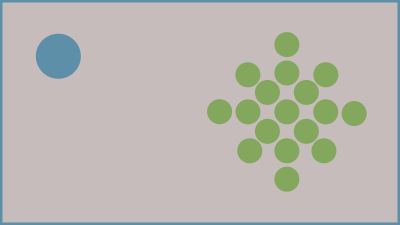
As well as this, most companies are not structured to encourage a long-term upwards career progression for designers. Why? It’s really hard to document, benchmark, and align creativity and the reality is that there is no industry standard for:
- What a designer is;
- What our job titles should be;
- What skills you need to have.
Web designer, mobile designer, product designer, service designer, UI (interface) designer, UX (user experience) designer… the list goes on. With all these very similar job titles crossing over in responsibilities, we can be benchmarked differently for different positions at different companies in different cities! As a result, not only do we as designers misunderstand our growth potential, our employers don’t really know how to progress us either. And, more importantly, we don’t know where other designers on our team sit on the career progression scale. This makes collaboration even harder because if we’re unsure who is strongest in one area of the design process, it’s sometimes easy to just get the job done rather than waiting on “the process” to decide how or when something gets done.
Additionally, design is still an underrated and misunderstood position in many companies. You don’t need me to go over the “seat at the table” debate here as it’s been spoken about, and at great lengths, but it is true that positions such as sales, or engineering, or support, are a lot more tangible in how they can be measured — $$$ sold per quarter, lines of code pushed to your repository (this unethical measure is worth another article in itself) — making the fact that it’s often very hard to predict how long a design project can take, and difficult to digest for executives who may solely see employees sitting on a balance sheet.
This has been improving in the past few years with the excellent design leadership coming out of some of the world’s largest businesses (AirBnB and Spotify come to mind first) but unfortunately, most of us don’t work in these companies, meaning the best thing we can do is keeping as up-to-date with the industry as we can, trying to stay on top of what other companies and designers are up to, and benchmarking ourselves against our peers in order to understand where we sit on the scale.
The bottom line is that you won’t be able to please everyone, but the best thing you can do is strive to push the business forward, putting egos aside and trying to do your best for the team at all times. Ultimately, your career will actually benefit a lot more from being a team player than trying to do everything yourself — this is something I’ve been burned by myself in the past. As you start on your design journey, you will find that often it’s the “loudest idea” that wins, i.e. the person either with the most experience or literally the loudest voice will “win”, but as you develop your confidence and internal reputation you will be given the chance to shine, too.
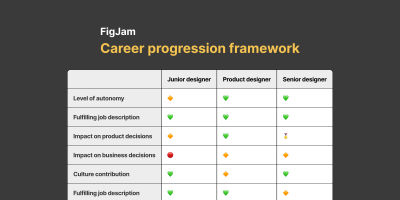
If you’d like to plan out a more equitable and democratic approach to progression within your team, I’ve created a very simple template that you can use. It should help you create a landscape for the skills within your team, which in turn can help with both progressions and for hiring a more diverse set of skills within your team.
7. Your Grass Is Green Enough
Appreciate what you have. The design industry lacking a centralized definition of what makes a great junior, mid, and senior designer, as well as there being huge disparities in salary benchmarking across disciplines, platforms, and business types, is both a blessing and a curse.
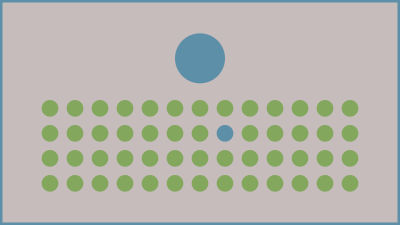
No regulation in these terms can be beneficial for those with strong connections and a desire to job-hop every six months in order to make as much money as possible, but as you can imagine, with every winner there is a loser. Someone sitting on $200k per year at a large corporation because they have worked what they have effectively, is likely doing the same job as someone earning $50k at a small startup, yet these worlds couldn’t be further apart when it comes to opportunity.
The more we become “known”, or have notable companies marked on our CVs, the more will be thrown at us, despite there being seemingly no tangible difference in the skillsets; only opportunity, which compounds. Lucky break leads to lucky break.
Privilege is very real in the tech industry, with connections and referrals playing a larger part than you can think of in how people move around the upper echelons of companies. It’s rarely publicized, but larger companies incentivize you to refer people you already know to open positions, which means that small network circles stay small for the most part. You can see why this is successful because strong validation from an industry peer can help the recruitment process a lot, but the reality for those not in those circles is that you will often not be given a second look when trying to “break” into these larger-size companies.
“Harvard study details how automated hiring systems, now used by 99% of Fortune 500 companies, exclude 10M+ qualified workers in the USA from hiring discussions. Why do they reject millions of résumés?”
I want to pull us all back in this blunt look at the industry to broadcast a very important fact — the reality is though that regardless of how much you’re earning, how many perfect pixels you’re pushing, or how many speaker opportunities you’re being offered, you’re still in a better place than the vast majority of people employed today.
It’s incredibly tempting to compare yourself to a high flying “designfluencer”, celebrity-type working at a big tech company, but the reality is they got lucky and took every chance that was on their plate. This is the moment where I recommend you to read the book Outliers by Malcolm Gladwell as he does a lot better than I could at explaining how some people become more successful than others.
With this in mind, we have to accept that we work in an industry that provides us with an incredibly balanced and manageable life compared to other jobs and take everything we have with a pinch of pink Himalayan salt. We’re not all given the same cards in life, so try to maximize your own situation. Appreciate what you have, and keep striving to move forward!
8. Work Is Not Your Family
But you can make great relationships at (and because of) your job. Designers by nature are incredibly passionate about the job they do, to the point where a lot of us would reply to “What is your idea of fun?” with “Opening [insert favorite design app here] and starting to design one of my ideas!” This is great! A lot of people would jump at the chance to be interested in their work outside of their 9-to-6 jobs, but it can also work against us when it comes to things like… living our lives.
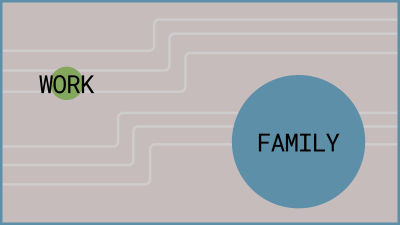
Have you ever been sitting at your desk and thinking, “I spend more time with these people than with my own family?” This isn’t unique to our industry, but it is something I believe we can grab a hold of, given the almost pure digital and (now even more often) remote-friendly nature of our jobs.
With the world generally shifting towards a bit more of a friendly approach to working from home, or even from anywhere, we have an incredible chance to be closer to our family and friends than ever before. This is a topic for another article perhaps, but, to make the story short, as an industry, the opportunity is in our hands to change this.
Back to my point. We spend so much time with our colleagues, remote or otherwise, and are bound by company values of inclusion and building a collective workforce on a mission to achieve a single goal, that we sometimes forget how employment works. Yet the reality is that we’re all very replaceable. The design and tech industries are currently in a hiring slump, where companies are desperate to hire and designers are desperate for jobs, yet people are struggling to find work. There are people queueing up outside waiting to take our jobs when we no longer have them, and our employers know this, meaning we’re bound tighter to our keyboards under the fear of losing what we have.
And it probably doesn’t help that a lot of the work-based terminology is war-focused — have you ever found yourself saying (or hearing) the following?
- “You’re killing it!”
We’re really not killing anything. - “Deadlines”
No one’s life is at risk when pushing pixels around the screen. - “Squad” or “Tribe”
This one is a double whammy because of its poor cultural appropriation.
Building an army is a surefire way to ensure we all prioritize what happens on our screens over what happens outside, and this is where our lack of family time compounds. It’s okay, we get paid to be interested! What we don’t get paid for is to work later than our contracted hours, skip birthday parties, or let our relationships wane due to a lack of prioritization.
Prioritize your relationships because it’s hard enough as it is to create true connections without them being brushed behind a laptop.
9. Become Irreplaceable
Learn outside of the box. This may seem counterintuitive given that I just wrote a lot of words about spending less time staring at the screen, but it’s where we rely on working smarter not harder to ensure we’re treated with the utmost respect in our jobs.
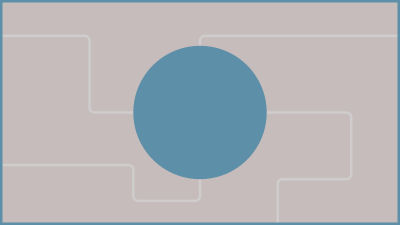
As creatives, we tend to lean on the side of caring too much about our work and the pixels we’re moving around being perfect. Unfortunately, the consumers of our products are ultimately trying to get a job done, rather than be impressed by a consistent typography hierarchy. Finding the balance between “just enough polish” and “too much” is where a strong designer is made.
Or, as Jeffrey Zeldman said (and more than once):
“Avoid chasing perfection.”
So, what do you do with the rest of your time if you’re not perfecting your work? Everything else, of course! For me, this has meant spending a lot of time with internal marketers, salespeople, product managers, and developers, to ensure that I’m learning as much as possible about how other people do their jobs. Ultimately, a business is made up of a team, not a collection of individuals; it’s a shame that education is still assessed largely as an individual sport rather than a team one, like in your career. If you’re lucky enough to work in a small company where everyone knows everyone’s name, you have the unrivaled opportunity to spend time with the founder/s, which for me has been invaluable in my career in order to be able to understand how to think rationally, laterally, and to place the business goals at the front of every decision.
This is the thing — businesses need to sell products and operate efficiently, and designers, being natural problem solvers, are perfectly positioned to help. If we can become allies (I know, this is a war term, feel free to correct me — see point 8. earlier!) with our senior executives, that “seat at the table” is ours before we’ve even asked for it.
It’s all about building trusted partnerships across the business where you become the person people turn to, to either:
- get the job done, or
- provide the correct answer.
Success and growth are about blending excellence in your craft whilst posturing yourself as someone people can trust. Does a salesperson need help with their presentation deck? Lend a few hours and design it properly, educating them how to do it themselves in the future. Is there constant frustration emitting from the engineering team that designers are providing unrealistic mock-ups? Meet the team in the middle by attending their planning and retrospective meetings to listen to feedback and work together to provide solutions. Regardless of whether you’re an intern, senior, or lead designer, this is a priceless collaboration that only helps your career move forward. Over time, these connections will turn themselves into testimonials and references for your future career trajectory.
The goal here is to aim to be the go-to person for everything. Sure, this is unrealistic in a bigger business, but it’s still manageable at a micro-level. The more people ask you for advice, the bigger your internal capital becomes, and the larger your future potential becomes.
10. Design Is Never Finished
Seriously, it’s not. Coming to terms with the fact that we will have to deliver designs that we don’t think are “ready” is one of the hardest mental challenges we have to overcome as we start to work. When we’re learning, whether through self-teaching or college or university, we have time to tweak to our heart’s content. The reality of working within a business that needs to sell products is that your deadline is mostly yesterday, and we need to move fast and ship work regardless of whether it’s “done”.
This means that sometimes your spacing may be off, your designs not fully tested with users or you end up with inefficiencies at scale — this mostly ends with us not using styles or components from our shiny design system, but creating one-off designs that in the long term create large amounts of design debt.
With us moving fast and (hopefully not literally) breaking things, we often find that not only do we repeat ourselves a lot, but the industry’s obsession with minimally viable products means that some of our best ideas are destined to end up in the digital graveyard. This is because we strive to release products fast and end up with a “maybe we can implement this later” mindset. The irony here is that our favorite apps or products are the ones where people do obsess over the flourishes and additional feature ideas that would in normal circumstances be put on the backlog for a possible future release.
If you find yourself lucky enough to work in an environment where you can contribute to a design system/UI kit/sticker sheet, you will meet this concept much earlier than most. A design system really is an evolving entity that requires patience, dedication, and commitment.
Regardless of whether you’re working in a Waterfall or an Agile product development process, you will be constantly moving. Even after you “ship” your product or feature, there will always be a next version. This can be hard to manage because we’re constantly juggling short and long-term ambitions and company goals. And if the last two years have taught us anything, it’s that we really can’t plan that far ahead anyway, making it even harder to organize and manage our designs.
As this compounds, it becomes difficult for designers to build portfolios because we typically work on small stripped-down pieces of work rather than individual shiny full and complete projects. Designers are famous for never having a finished portfolio or personal website, and the unfair expectation within the industry to be able to showcase fully-fledged case studies means that we can often be crippled by our inability to actually show our designs.
However, there are definitely things that we can do within our portfolios to showcase our skills, so keep your chin up!
Conclusion
Being a designer is such an incredible opportunity to be able to produce real, tangible products that people across the world use and love. From the comfort of our laptops and desktops, we can ideate remotely with colleagues in another city or on another continent, crossing language and cultural barriers, and collaborating with the shared interest of trying to improve on what we do every day.
It’s important to keep this in mind at every step of our career, as we encounter trials that make us feel like giving up or situations where we think we deserve more. Keeping in mind that we are fortunate enough to love what we do, be paid enough compared to the majority of people, and be able to deliver products that help people live their lives more happily, it’s not too bad of a gig, hey? So, keep your chin up as it’s a long and winding road ahead that will be fun, testing, and enlightening, all at the same time.
If there’s one thing I’d recommend you to take away from this article, it’s to get out there and start connecting with other people in your industry — hover around at an event, maybe even sign yourself up for a short demonstration or presentation if you’re feeling brave; make connections with other designers; seek help and advice but also give help, too, whenever you can. And I’m always around if you need a second pair of eyes on your pitch, or just want to chat with a fellow designer — as I said earlier, you can drop me a line in the comment form below, or send me a message on Twitter, I’d be really happy to help or just get in touch!
